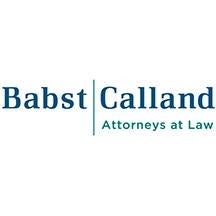On November 11, 2022, the U.S. Environmental Protection Agency (EPA) released a pre-publication version of its supplemental proposal for Standards of Performance for New, Reconstructed, and Modified Sources and Emissions Guidelines for Existing Sources: Oil and Natural Gas Sector Climate Review (Supplemental Proposal). The Supplemental Proposal has been highly anticipated since EPA published its initial proposal on November 15, 2021. EPA, Standards of Performance for New, Reconstructed, and Modified Sources and Emissions Guidelines for Existing Sources: Oil and Natural Gas Sector Climate Review, 86 Fed. Reg. 63110 (Nov. 15, 2021) (Initial Proposal).
EPA currently regulates emissions from oil and natural gas facilities under 40 C.F.R Part 60 Subparts OOOO[1] and OOOOa.[2] As part of the Initial and Supplemental Proposals, EPA would regulate oil and natural gas facilities constructed, modified, or reconstructed after November 15, 2021, under a new Subpart OOOOb. With the Supplemental Proposal, EPA has released proposed regulatory language for Subpart OOOOb. In addition, EPA released proposed regulatory text for emissions guidelines in a new Subpart OOOOc. These emissions guidelines are intended to inform states in the development, submittal, and implementation of state plans to establish standards of performance for greenhouse gases (in the form of limitations on methane) from sources existing on or before November 15, 2021. Under the Supplemental Proposal, states and tribes would be required to submit plans to EPA for review within 18 months of the publication of a final rule, with a compliance deadline for existing sources that is no later than 36 months after the deadline to submit the plan to EPA. The Supplemental Proposal also includes an updated proposed “Appendix K,” which is a protocol for determining leaks using optical gas imaging that EPA is now proposing to limit to natural gas processing plants.
The Supplemental Proposal includes several significant changes or updates, which EPA describes as improvements, and additional proposed requirements for sources that were not covered in the Initial Proposal. Several consequential aspects of the Supplemental Proposal include:
-
Super-Emitter Response Program: EPA is proposing to allow regulatory agencies and approved “qualified” third parties to monitor well sites, centralized production facilities, and compressor stations for “super-emitter emission events,” which are defined as emission events resulting in 100 kilograms (220.5 pounds) per hour or more of methane. Upon receipt of a notification by a third party, owners and operators of these facilities would be required to initiate a prescribed root cause analysis within five days and complete the root cause analysis and initial corrective actions within 10 calendar days. If initial corrective actions do not rectify the identified cause of the event, facility owners and operators will be required to prepare and submit a corrective action plan to EPA. In addition, recipients of “super-emitter emission event” notifications would also be required to notify EPA within 15 days of completing corrective actions. EPA plans to host a public website that will include information related to the proposed Super-Emitter Response Program.
-
Abandoned and Unplugged Well Monitoring: The Supplemental Proposal includes new suite of well closure requirements. Under these proposed requirements, owners and operators of well sites would be required to submit a closure plan to EPA within 30 days of the cessation of production. The contents of this plan would need to include the steps necessary to permanently plug all wells, a description of financial requirements and assurance to complete closure, and the schedule for completing closure. Fugitive emissions monitoring would be required until closure, and an Optical Gas Imaging survey would be required to confirm that closure eliminated any emissions from the well.
-
Fugitive Emissions Monitoring for All Wells: Contrary to its Initial Proposal, in which EPA proposed to require fugitive emissions monitoring (i.e., leak detection and repair or LDAR monitoring) at wells with estimated emissions of 3 tons per year or more, the Supplemental Proposal would require LDAR monitoring at all well sites, regardless of estimated fugitive emissions from the well sites. The type (audio, visual, or olfactory versus instrument) and frequency of LDAR monitoring will vary depending on whether the facility in question is a single wellhead-only well site, wellhead only well site with two or more wellheads, or a well site or a centralized production facility that contains “major production and processing equipment.”
These are only some of the numerous additional requirements that EPA is proposing in the Supplemental Proposal. Due to the breadth and complexity of the Supplemental Proposal and the long-awaited release of proposed regulatory text, EPA has also published a memorandum and accompanying chart that summarizes where, throughout the proposal, the agency is soliciting public comment (Summary of Comment Solicitations). In the Summary of Comment Solicitations, EPA has organized the agency’s 142 solicitations for comment by topic, preamble section, and issue to assist the public in understanding on which aspects of the proposal the agency specifically seeks input and guidance. Examples of the topics on which EPA solicits comment include: the potential of advanced methane detection technologies; the “equivalence determination” now required by Clean Air Act Section 136(f)(6)(A)(ii), a provision added to the per the Biden Administration’s Inflation Reduction Act of 2022; and the proposed Super-Emitter Response Program.
Although the Supplemental Proposal has not been published in the Federal Register, EPA has established a public comment deadline of February 13, 2023, and will hold virtual public hearings on January 10 and 11, 2023. Comments can be submitted to EPA by registering to speak at the public meeting or in writing on the Federal e-rulemaking portal (www.regulations.gov). The agency plans to issue a final rule in 2023.
EPA’s efforts to advance CAA regulations to reduce methane emissions from the oil and gas industry sector are separate from the inspections and anticipated rulemaking by the Pipeline and Hazardous Materials Safety Administration (PHMSA) under Sections 113 and 114 of the PIPES Act of 2020. While PHMSA has stated that EPA’s regulations may satisfy some Section 114 PIPES Act requirements, it has provided little guidance on this issue.
Originally Published by Babst Calland on November 21, 2022.
FOOTNOTES
[1] Specified affected facilities constructed, reconstructed, or modified after August 23, 2011 and on or before September 18, 2015 are regulated under Subpart OOOO.
[2] Specified affected facilities constructed, reconstructed, or modified after September 18, 2015 and on or before November 15, 2021 are regulated under Subpart OOOOa.






 />i
/>i

